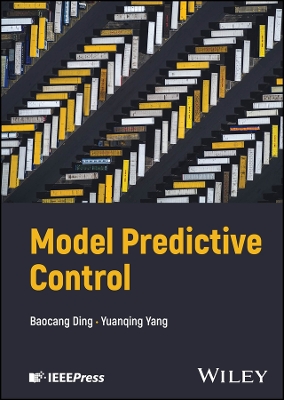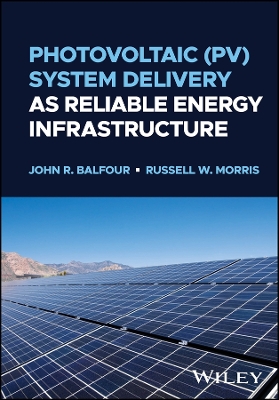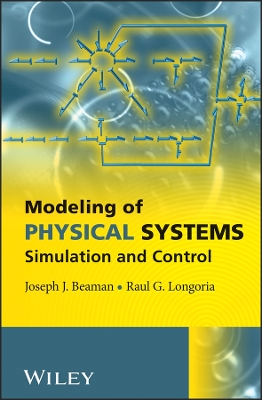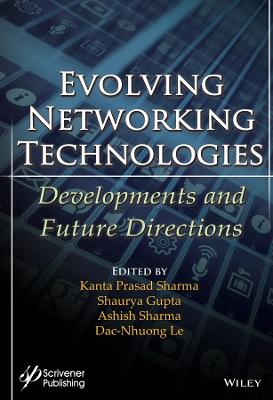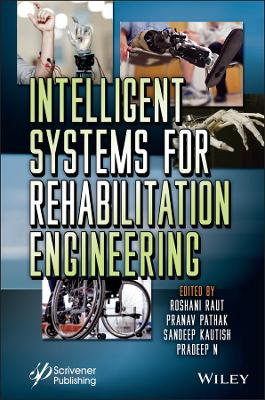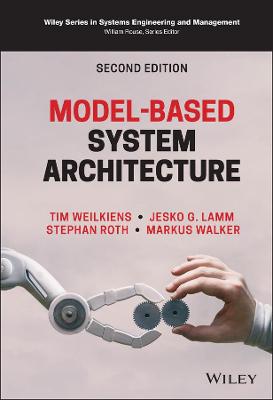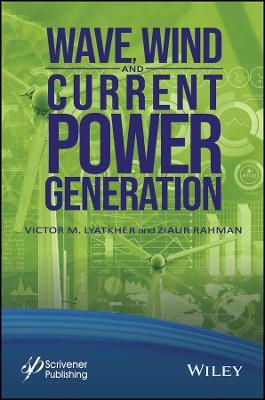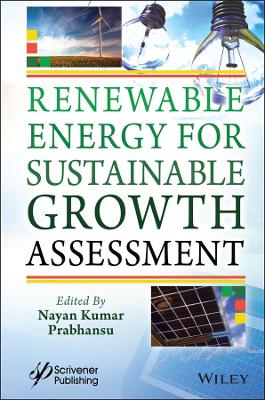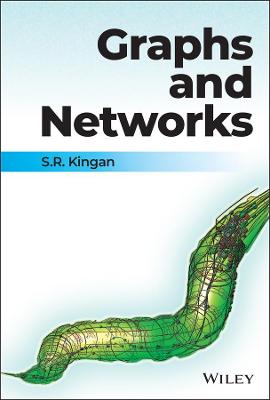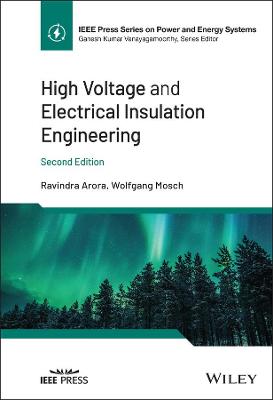Power Integrity for Electrical and Computer Engineers
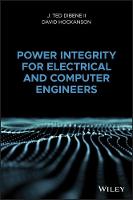 -15%
portes grátis
-15%
portes grátis
Power Integrity for Electrical and Computer Engineers
Hockanson, David; Dibene, J. Ted, II
John Wiley & Sons Inc
11/2019
560
Dura
Inglês
9781119263241
15 a 20 dias
1020
1 Introduction 3
1.1 Introduction to Power Integrity for Computer Engineers 3
1.2 Some Advancements in Power Integrity 5
1.3 First Principles Analysis 10
1.4 Scope of Text 15
Bibliography 19
2 Power Conversion for Power Integrity 21
2.1 Power Distribution Systems 21
2.2 The Buck Converter 27
2.2.1 The LC Filter 30
2.2.2 Silicon Power Devices in a Buck Regulator 37
2.2.2.1 Power MOSFETs 37
2.3 Inductors 53
2.3.1 Losses in Power Inductors 60
2.4 Controllers 69
2.4.1 A Simple Feedback System 71
2.4.2 Generalized Controller Feedback Design Setup 74
2.4.3 Buck Regulator Design Example 76
2.5 Integration of Closed Loop Model into SPICE 82
2.6 Short Discussion on System Considerations for Power Conversion Integration 90
2.7 Advanced Topics in Power Conversion 91
2.8 Summary 97
Bibliography 102
3 Platform Technologies and System Considerations 105
3.1 Physical Elements 106
3.1.1 Capacitors for PDN Applications 121
3.2 Power Delivery System Interaction 130
3.2.1 Power Load Line Fundamentals 130
3.2.1.1 Tolerance Band 139
3.2.1.2 Voltage Guardband 143
3.3 System Noise Considerations in Power Integrity 150
3.4 EMI and Power Integrity 154
3.5 Brief Discussion on Noise Mitigation for Power Integrity 161
3.6 Summary 162
Bibliography 164
4 Electromagnetic Concepts for Power Integrity 167
4.1 Coordinate Systems 169
4.1.1 The Cylindrical Coordinate System 172
4.1.2 The Spherical Coordinate Systems 175
4.2 EM Concepts - Maxwell's Equations 177
4.2.1 The Biot-Savart Law 182
4.2.2 The Magnetic Vector Potential 186
4.3 Some Useful Closed-Form Equations 188
4.3.1 Simple Plane-Pair Inductance 190
4.3.2 Inductance of Two Wires in Space 192
4.3.3 Resistance Between Two Vias in a Plane 193
4.3.4 Inductance of Small Wire or Trace Above Plane Using Image Theory 196
4.4 Examples of Using Equations 197
4.4.1 Power Trace Above a Plane Between Capacitors 197
4.4.2 Inductance of a Trace Over a Plane 199
4.5 Summary 201
Bibliography 203
Part II Tools for Power Integrity Analysis 205
5 Transmission Line Theory and Application 207
5.1 Telegrapher's Equations 207
5.1.1 Damped Transmission Line Approximation 209
5.2 Frequency-Domain Analysis Fundamentals 211
5.3 Power Planes, Grids, and Transmission Lines 224
5.4 Summary 226
Bibliography 227
6 Signal Analysis Review 229
6.1 Linear, Time-Invariant Systems 229
6.2 The Dirac Delta Function 230
6.3 Convolution 231
6.4 Fourier Series 234
6.5 Fourier Transform 239
6.5.1 Convolution Theorem 240
6.5.2 Time-Shift Theorem 241
6.5.3 Superposition Theorem 241
6.5.4 Duality Theorem 242
6.5.5 Differentiation Theorem 242
6.5.6 Integration Theorem 242
6.5.7 Multiplication Theorem 245
6.5.8 Time-Scaling Theorem 245
6.5.9 Modulation or Frequency-Translation Theorem 246
6.6 Laplace Transform 250
6.6.1 Convolution Theorem 251
6.6.2 Time-Shift Theorem 251
6.6.3 Superposition Theorem 252
6.6.4 Differentiation Theorem 252
6.6.5 Integration Theorem 253
6.6.6 Multiplication Theorem 254
6.6.7 S-shift Theorem 254
6.7 Summary 261
Bibliography 262
7 Numerical Methods for Power Integrity 263
7.1 Introduction to Analytical Methods 266
7.1.1 Separation of Variables 267
7.1.2 Introduction to Variational Methods 278
7.1.2.1 The Galerkin Method 285
7.1.3 Conformal Mapping 288
7.2 Numerical Methods 292
7.2.1 The Finite Difference Method 292
7.2.2 The Finite Element Method 311
7.3 Error and Convergence 315
7.3.1 Errors in Numerical Analysis 316
7.3.2 Convergence and Accuracy 319
7.4 Summary 321
Bibliography 323
Part III Power Integrity Analytics 327
8 Frequency-Domain Analysis 329
8.1 Introduction to FDA 329
8.2 The PDN Structure, Physically and Electrically 331
8.2.1 The Damped Transmission Line Approximation 333
8.2.2 The Subcomponents of the PDN 343
8.3 Analytical Methods 350
8.4 Excitation in PDN Systems 364
8.5 PDN Optimization 376
8.5.1 Monte Carlo Analysis 383
8.6 Power Loss in PDN Systems 388
8.7 Summary 390
Bibliography 392
9 Time-Domain Analysis 395
9.1 Introduction to TDA 395
9.1.1 Data and Power Integrity 396
9.2 Voltage Droop Definitions 398
9.3 Droop Behavior and Dynamic Loads 399
9.3.1 Step Response 403
9.3.2 High-Frequency Pulse Droop 408
9.3.3 Susceptible State Voltage Droop 421
9.4 Analytical Approach to Step Response 430
9.5 Boundary Budget System Discussion 436
9.6 Power Loss Due to the PDN 439
9.6.1 Dynamic Silicon Power and Leakage 440
9.6.2 DC Losses in the PDN 446
9.6.3 AC Power Loss in PDN 451
9.7 Summary 454
Bibliography 458
10 Silicon Power Integrity 461
10.1 Introduction 461
10.2 Device Construction and Architecture Considerations 463
10.3 On-die Decoupling 476
10.4 Device Metal Routing Revisited 483
10.5 The Localized Impedance Network 490
10.6 Multi-rail vs. Single Rail Power Discussion 494
10.7 On-die Gating 499
10.8 Discussion of System-Level Issues with Charge and Current Density 502
10.9 Noise 507
10.10 Summary 516
Bibliography 520
Appendices 523
A.1 Introduction to SPICE 523
A.1.1 The SPICE Deck 524
A.1.2 Sources and Loads 526
A.1.3 Passive Elements 529
A.1.4 Transistor Formats 531
A.1.5 Analysis Calls, Frequency/Time Steps, and Initial Conditions 532
A.1.6 Some SPICE Examples 533
B.1 Quasi-Static Fields 537
C.1 Spherical Coordinate System 540
D.1 Vector Identities and Formula 541
E.1 Summary of Common Relationships Among Coordinate Systems 542
E.1.1 Variable Translations 542
E.1.2 Coordinate Translations 543
E.1.3 Curl Equation Expansions 544
E.1.4 Divergence Equation Expansions 544
E.1.5 Del-Operator Expansions 544
E.1.6 Laplacian Expansions 545
F.1 Some Notation Definitions 545
G.1 Common Theorems 546
Bibliography 546
Index 547
1 Introduction 3
1.1 Introduction to Power Integrity for Computer Engineers 3
1.2 Some Advancements in Power Integrity 5
1.3 First Principles Analysis 10
1.4 Scope of Text 15
Bibliography 19
2 Power Conversion for Power Integrity 21
2.1 Power Distribution Systems 21
2.2 The Buck Converter 27
2.2.1 The LC Filter 30
2.2.2 Silicon Power Devices in a Buck Regulator 37
2.2.2.1 Power MOSFETs 37
2.3 Inductors 53
2.3.1 Losses in Power Inductors 60
2.4 Controllers 69
2.4.1 A Simple Feedback System 71
2.4.2 Generalized Controller Feedback Design Setup 74
2.4.3 Buck Regulator Design Example 76
2.5 Integration of Closed Loop Model into SPICE 82
2.6 Short Discussion on System Considerations for Power Conversion Integration 90
2.7 Advanced Topics in Power Conversion 91
2.8 Summary 97
Bibliography 102
3 Platform Technologies and System Considerations 105
3.1 Physical Elements 106
3.1.1 Capacitors for PDN Applications 121
3.2 Power Delivery System Interaction 130
3.2.1 Power Load Line Fundamentals 130
3.2.1.1 Tolerance Band 139
3.2.1.2 Voltage Guardband 143
3.3 System Noise Considerations in Power Integrity 150
3.4 EMI and Power Integrity 154
3.5 Brief Discussion on Noise Mitigation for Power Integrity 161
3.6 Summary 162
Bibliography 164
4 Electromagnetic Concepts for Power Integrity 167
4.1 Coordinate Systems 169
4.1.1 The Cylindrical Coordinate System 172
4.1.2 The Spherical Coordinate Systems 175
4.2 EM Concepts - Maxwell's Equations 177
4.2.1 The Biot-Savart Law 182
4.2.2 The Magnetic Vector Potential 186
4.3 Some Useful Closed-Form Equations 188
4.3.1 Simple Plane-Pair Inductance 190
4.3.2 Inductance of Two Wires in Space 192
4.3.3 Resistance Between Two Vias in a Plane 193
4.3.4 Inductance of Small Wire or Trace Above Plane Using Image Theory 196
4.4 Examples of Using Equations 197
4.4.1 Power Trace Above a Plane Between Capacitors 197
4.4.2 Inductance of a Trace Over a Plane 199
4.5 Summary 201
Bibliography 203
Part II Tools for Power Integrity Analysis 205
5 Transmission Line Theory and Application 207
5.1 Telegrapher's Equations 207
5.1.1 Damped Transmission Line Approximation 209
5.2 Frequency-Domain Analysis Fundamentals 211
5.3 Power Planes, Grids, and Transmission Lines 224
5.4 Summary 226
Bibliography 227
6 Signal Analysis Review 229
6.1 Linear, Time-Invariant Systems 229
6.2 The Dirac Delta Function 230
6.3 Convolution 231
6.4 Fourier Series 234
6.5 Fourier Transform 239
6.5.1 Convolution Theorem 240
6.5.2 Time-Shift Theorem 241
6.5.3 Superposition Theorem 241
6.5.4 Duality Theorem 242
6.5.5 Differentiation Theorem 242
6.5.6 Integration Theorem 242
6.5.7 Multiplication Theorem 245
6.5.8 Time-Scaling Theorem 245
6.5.9 Modulation or Frequency-Translation Theorem 246
6.6 Laplace Transform 250
6.6.1 Convolution Theorem 251
6.6.2 Time-Shift Theorem 251
6.6.3 Superposition Theorem 252
6.6.4 Differentiation Theorem 252
6.6.5 Integration Theorem 253
6.6.6 Multiplication Theorem 254
6.6.7 S-shift Theorem 254
6.7 Summary 261
Bibliography 262
7 Numerical Methods for Power Integrity 263
7.1 Introduction to Analytical Methods 266
7.1.1 Separation of Variables 267
7.1.2 Introduction to Variational Methods 278
7.1.2.1 The Galerkin Method 285
7.1.3 Conformal Mapping 288
7.2 Numerical Methods 292
7.2.1 The Finite Difference Method 292
7.2.2 The Finite Element Method 311
7.3 Error and Convergence 315
7.3.1 Errors in Numerical Analysis 316
7.3.2 Convergence and Accuracy 319
7.4 Summary 321
Bibliography 323
Part III Power Integrity Analytics 327
8 Frequency-Domain Analysis 329
8.1 Introduction to FDA 329
8.2 The PDN Structure, Physically and Electrically 331
8.2.1 The Damped Transmission Line Approximation 333
8.2.2 The Subcomponents of the PDN 343
8.3 Analytical Methods 350
8.4 Excitation in PDN Systems 364
8.5 PDN Optimization 376
8.5.1 Monte Carlo Analysis 383
8.6 Power Loss in PDN Systems 388
8.7 Summary 390
Bibliography 392
9 Time-Domain Analysis 395
9.1 Introduction to TDA 395
9.1.1 Data and Power Integrity 396
9.2 Voltage Droop Definitions 398
9.3 Droop Behavior and Dynamic Loads 399
9.3.1 Step Response 403
9.3.2 High-Frequency Pulse Droop 408
9.3.3 Susceptible State Voltage Droop 421
9.4 Analytical Approach to Step Response 430
9.5 Boundary Budget System Discussion 436
9.6 Power Loss Due to the PDN 439
9.6.1 Dynamic Silicon Power and Leakage 440
9.6.2 DC Losses in the PDN 446
9.6.3 AC Power Loss in PDN 451
9.7 Summary 454
Bibliography 458
10 Silicon Power Integrity 461
10.1 Introduction 461
10.2 Device Construction and Architecture Considerations 463
10.3 On-die Decoupling 476
10.4 Device Metal Routing Revisited 483
10.5 The Localized Impedance Network 490
10.6 Multi-rail vs. Single Rail Power Discussion 494
10.7 On-die Gating 499
10.8 Discussion of System-Level Issues with Charge and Current Density 502
10.9 Noise 507
10.10 Summary 516
Bibliography 520
Appendices 523
A.1 Introduction to SPICE 523
A.1.1 The SPICE Deck 524
A.1.2 Sources and Loads 526
A.1.3 Passive Elements 529
A.1.4 Transistor Formats 531
A.1.5 Analysis Calls, Frequency/Time Steps, and Initial Conditions 532
A.1.6 Some SPICE Examples 533
B.1 Quasi-Static Fields 537
C.1 Spherical Coordinate System 540
D.1 Vector Identities and Formula 541
E.1 Summary of Common Relationships Among Coordinate Systems 542
E.1.1 Variable Translations 542
E.1.2 Coordinate Translations 543
E.1.3 Curl Equation Expansions 544
E.1.4 Divergence Equation Expansions 544
E.1.5 Del-Operator Expansions 544
E.1.6 Laplacian Expansions 545
F.1 Some Notation Definitions 545
G.1 Common Theorems 546
Bibliography 546
Index 547

